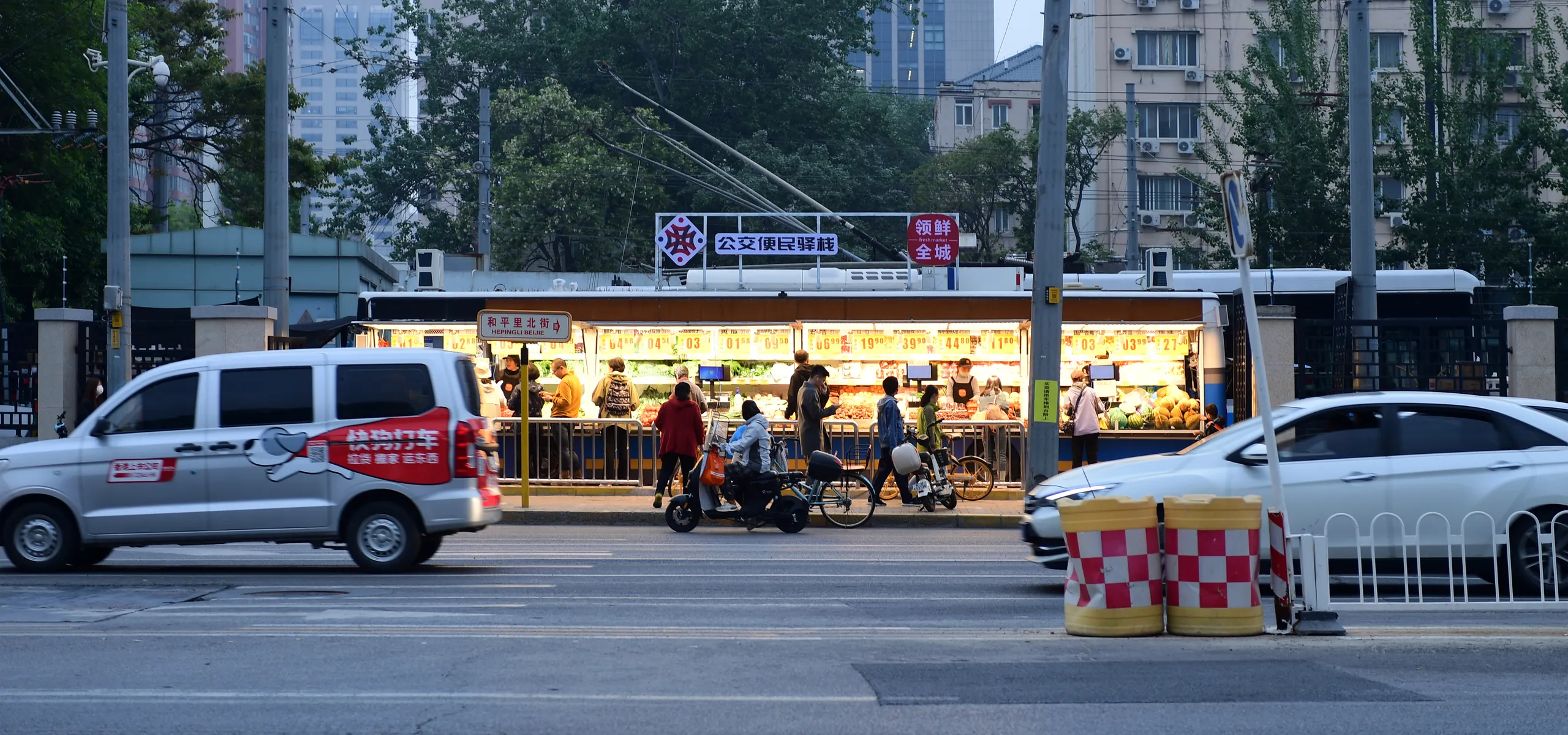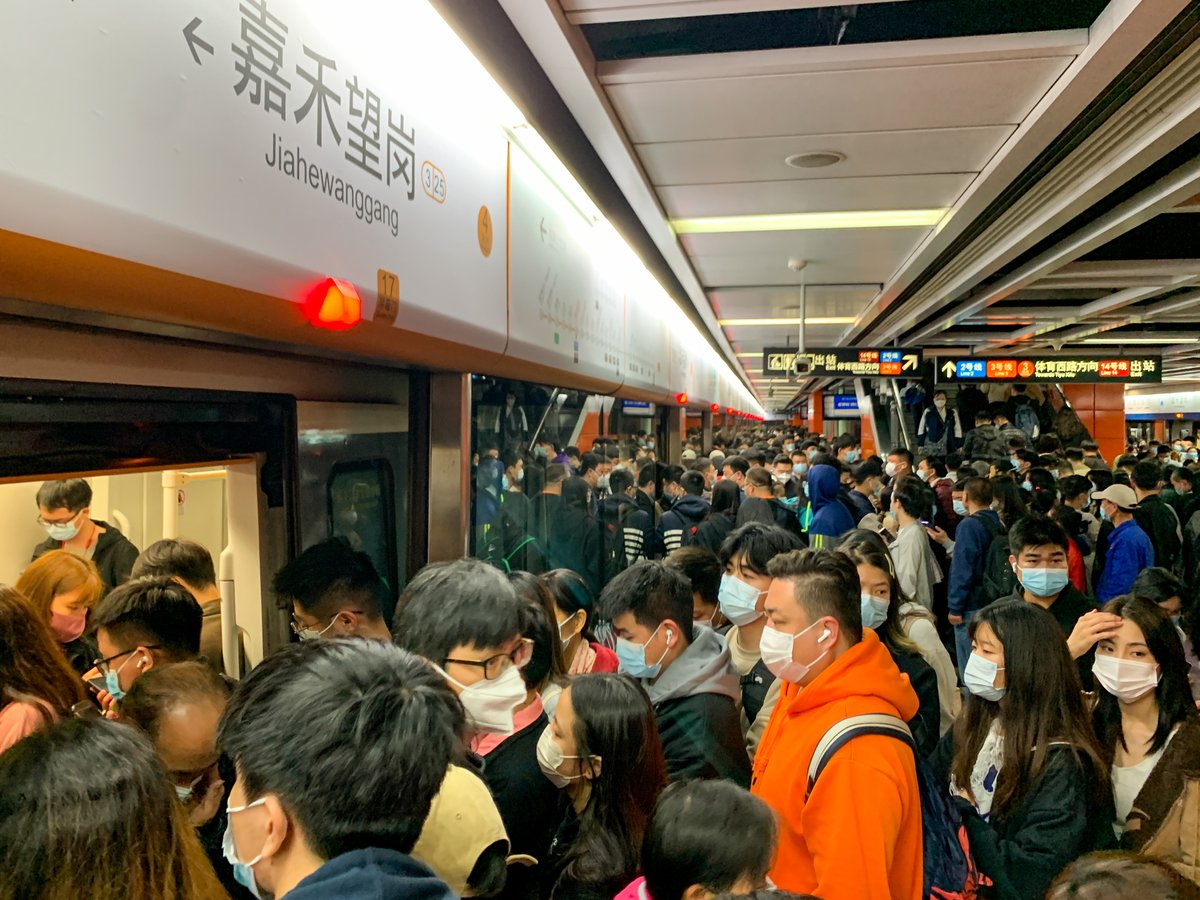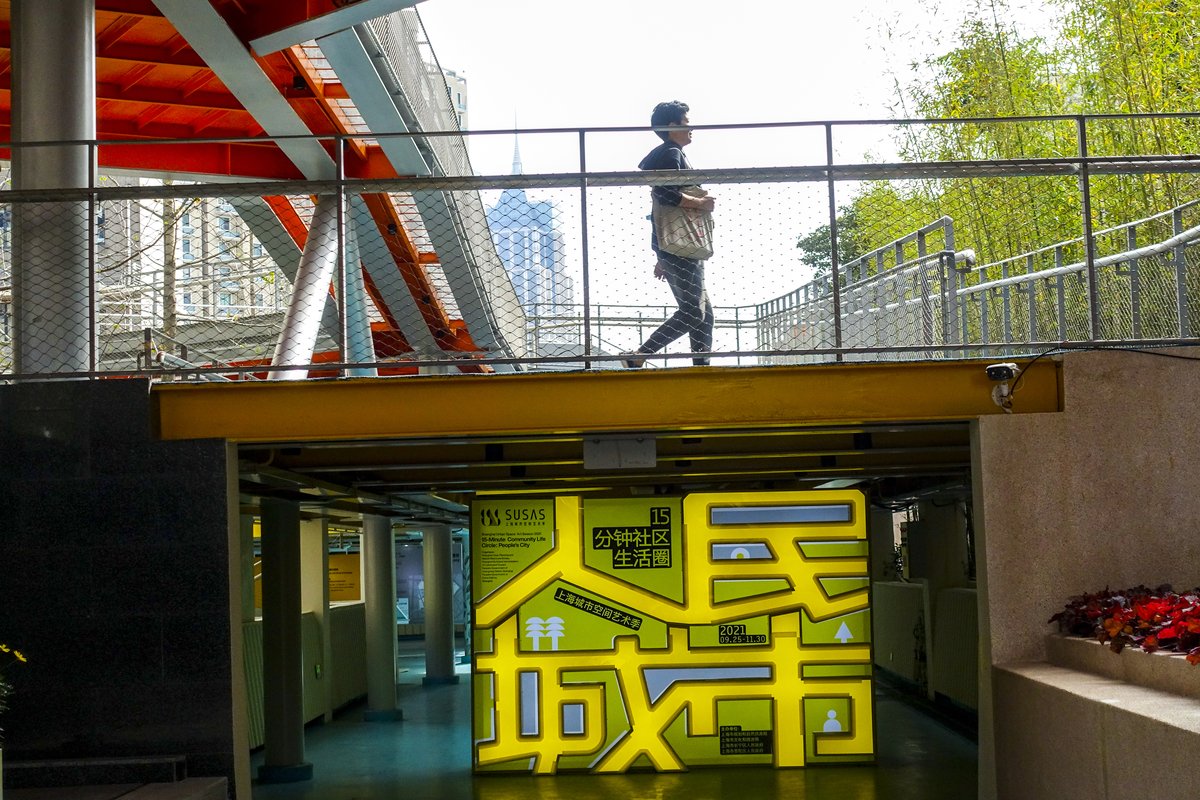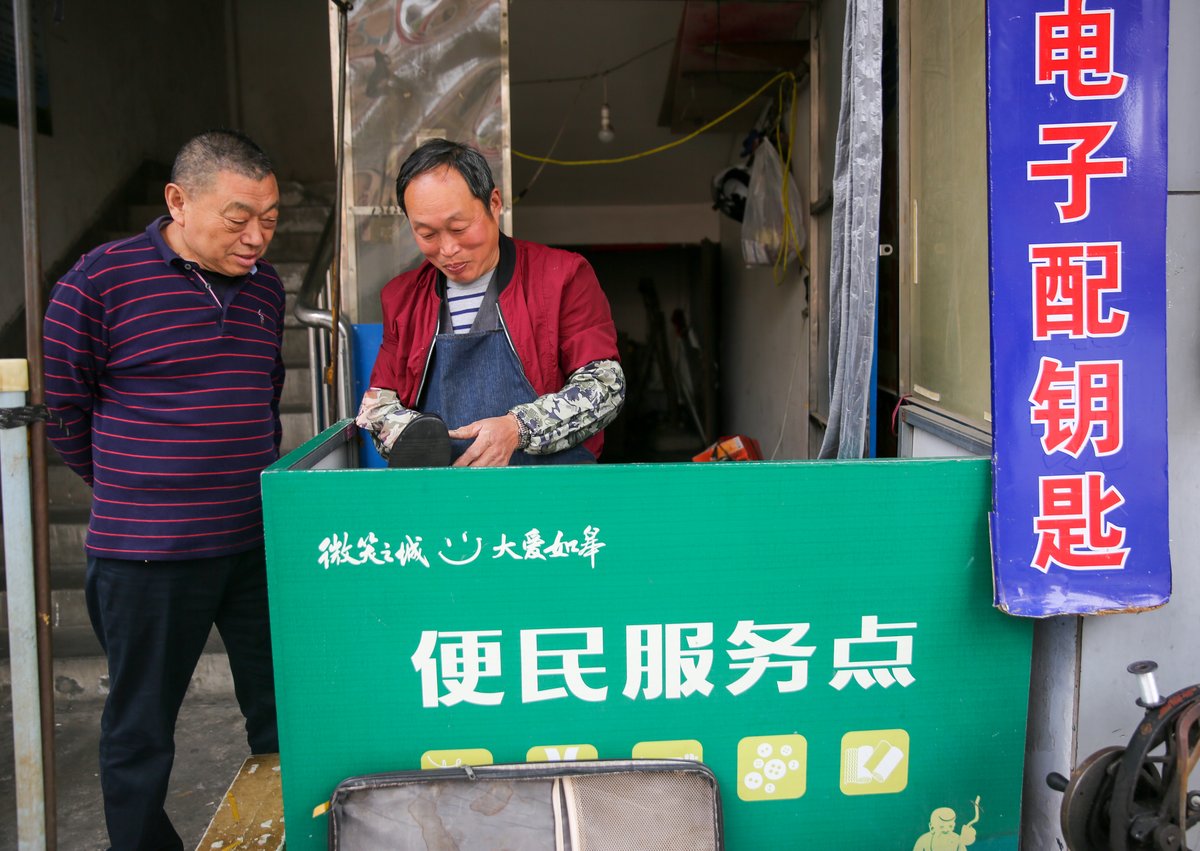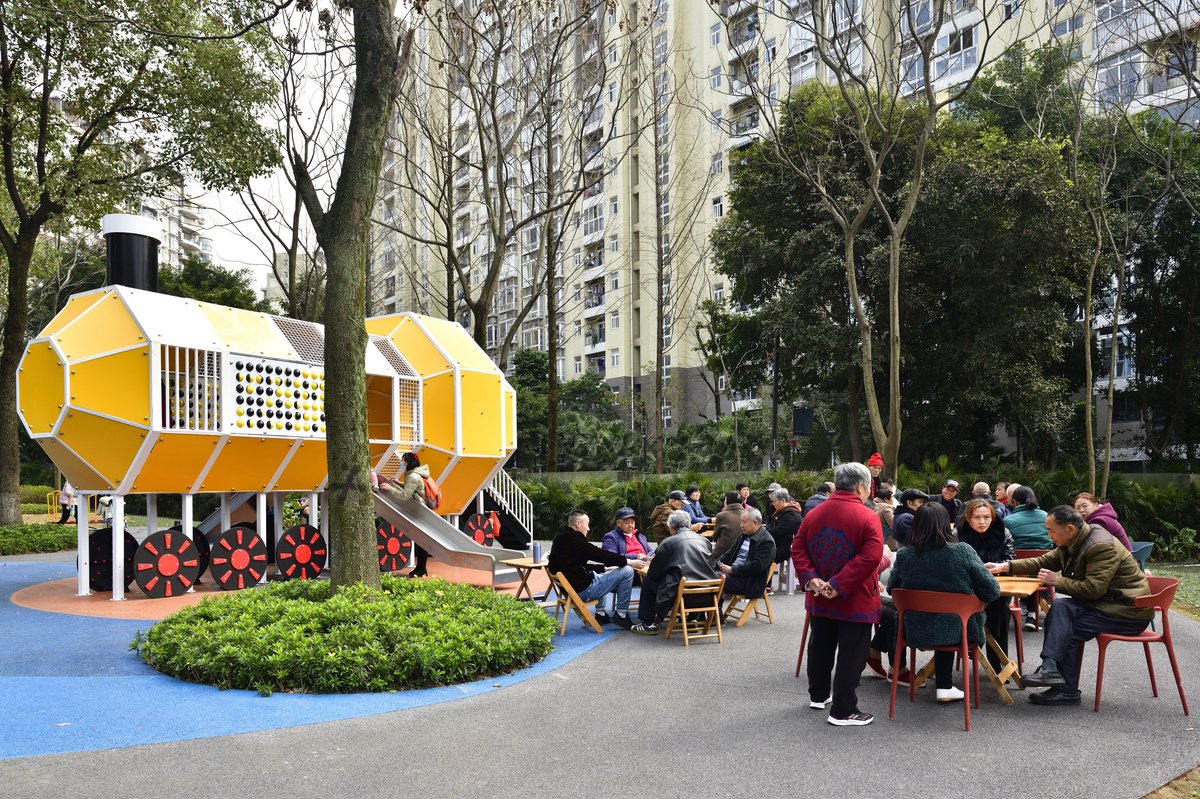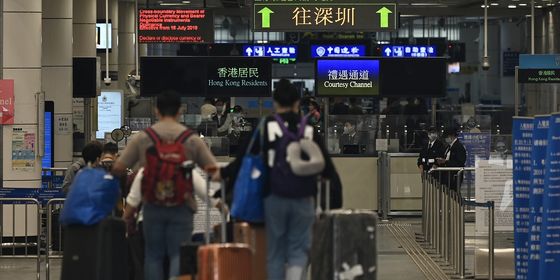Fed up with suburban sprawl, Chinese urban planners are advocating cities where all needs can be met within walking distance
For Chen Yan, a lot can be done within a 15-minute walk of his apartment in Beijing: taking his dog for a walk in the park, buying his favorite berries from a local market stall, and getting medicine from the community hospital—all except going to work.
Instead, it takes Chen over an hour and three subway transfers every morning from his home in Changping district to his office in Haidian district, and then he has to make the return trip in the evening. “Every day is about running and running. I don’t have time to enjoy life. Sometimes I don’t even know what I’m living for,” the 27-year-old programmer tells TWOC.
In 2021, a report from the China Academy of Urban Planning and Design noted that over 14 million people in 44 major Chinese cities have a daily commute of more than 60 minutes. About 30 percent of residents in the capital, Beijing, spent more than one hour commuting each way—a phenomenon known as “extreme commute (极端通勤).” By comparison, most member states of the EU had had a commuting time between 24 and 28 minutes on average before the Covid-19 pandemic, according to a 2019 report.
Besides the inconvenience and the effect on urban traffic, long commutes seem to be linked to higher levels of stress in workers and poorer workplace performance, according to a 2017 survey led by UK-based healthcare company Vitality Health in partnership with Cambridge University.
Traditionally, China’s urban planning has focused on building suburban sprawl and focus on gated communities. But as the negative effects of long commutes become apparent, the idea of being able to live, work, shop, and enjoy green spaces within minimal travel distance is enticing to urban residents, who believe this can both offer better amenities within their neighborhoods and strengthen bonds among neighbors.
Cities like Suzhou are trying to reduce average commute time to 45 minutes or less by expanding transportation networks. This is part of China’s “15-minute city” plan, which aims to make urban spaces much greener and more liveable, with easy access to work, health care, entertainment, and other neighborhood amenities.
Globally, Shanghai was the first city to propose the idea of a “15-minute community” during the first World City Forum in 2014: to build a city for people where daily essentials and public services are accessible to residents within a 15-minute walking or cycling distance. In 2017, China’s State Council granted Shanghai the right to pilot a project of developing such a community.
Under Shanghai’s 2017 master plan for urban development, 99 percent of public service facilities in communities like hospitals and schools will be accessed within 15 minutes’ walking distance by 2035. Additionally, up to 90 percent of green space including parks and squares of over 400 square meters should be accessible within five minutes as of 2035. Other cities including Beijing, Guangzhou, Nanjing, and Wuhan have followed suit, and in 2020, Paris also announced its plan to build a 15-minute neighborhood to lower carbon footprints and improve quality of life for locals.
To make the 15-minute city a reality, local governments across the country have encouraged small businesses to operate within communities. According to the Ministry of Commerce, 280,000 small businesses including vegetable stalls and housekeeping services have been introduced for over 1,400 15-minute communities by this March.
This April, a retired bus in Beijing’s Chaoyang district was converted into a pop-up stall selling a variety of vegetables and fruits. The Beijing Public Transport Corporation plans to install more than 300 repurposed buses in three years to serve 90 percent of residents. When TWOC visited on a Monday evening in May, customers, mostly elderly people living in the area, were busy picking up vegetables and admiring their lower prices and fresh taste compared to supermarkets.
Since 2010, Chinese authorities in a number of cities have ordered wet markets and wholesale markets to move to the outskirts of urban areas to improve congestion and sanitation within the city. This led to the emergence of an increasing number of supermarkets and independent vendors within the city, according to Liu Yuelai, professor in urban planning at Tongji University. “Some markets moved for lower rental costs, but when they eventually moved out, the final community function (of providing food and services) is all gone so the government has to rebuild or fix the loss of community services caused by removals of these markets.”
“About two years ago, the community officials told us that we didn’t need to pay the money for my repair stall as we provided services for the convenience of residents,” says Huang Yuan, a mechanic in his 50s who agreed to be interviewed by TWOC under a pseudonym. Until then, Huang paid about 300 yuan per month to the neighborhood committee for the past 20 years to run his repair stall in Beijing’s Liulitun neighborhood.
When TWOC visits, a constant stream of neighborhood residents are coming in and out of Huang’s shop to ask him to duplicate keys, or blow up or repair tires. Huang feels he has become an inseparable part of the community. “Some [customers] have become acquaintances that I’ve been familiar with for many years,” Huang tells TWOC, in between chatting with a local uncle about a lost dog.
For Liu, the professor and community planner, the 15-minute community also offers residents a sense of security and belonging to the neighborhood. “Whether you were born here or moved here, how do you find your relations (to the community)? It’s our daily life that helps us form relations, including the space we live.”
In 2016, Liu helped transform an unused lot of 2,000 square meters in Shanghai, between an older residential neighborhood from the 1980s and a modern high-end community, into small ecological farms. There are vegetable patches, a garden, and a “blue cabin”—a repurposed shipping container where residents can meet and chat. “The biggest park nearby was Huangxing Park, which was still pretty far from this neighborhood. As the whole community was surrounded by lots of buildings, the small ecological farms can provide spaces for locals to take a walk or a trip, elderly people can enjoy sunbathing and talk with one other, and children can play and learn (from nature),” Liu says.
Initially, though locals need to spend over 15 minutes to get to the ecological park as there is only one gate available, meaning many have to take long detours. Liu hopes the ecological park can help break the barriers between the two closed communities. “When we first proposed the idea, residents nearby worried about the noise of crowds. They also felt anxious about the lack of protection of walls as closed communities are still considered the most desirable place to live.” After two years of negotiation with residents, Liu’s team finally demolished the three-meter-high wall in 2019, cutting some locals‘ travel time to the park to only one minute.
But some urbanites in China are still happy with the side effects of the 15-minute city. This May, residents in a community in Nanjing blamed a new express delivery courier office that opened up in the neighborhood for noise from delivery vans, and expressed safety concerns about leaving the gate open for the convenience of people going to pick their parcels. In March, residents in a neighborhood in Sichuan province reported the owners of about 15 stalls selling vegetables, meat, flowers, and repair services for blocking the fire exit and for sanitation issues.
In addition, most neighborhoods are still far from the 15-minute “life circle” envisioned by urban planners. According to Envirunion.com, an online community focused on environmental protection, there are 3.07 public bathrooms for every 10,000 people in China, or 2.7 bathrooms per square kilometer, which is still lower than the goal of 3 to 5 bathrooms per square kilometer issued by the Ministry of Housing and Urban-Rural Development in 2013.
Chen has personally felt this difficulty. “There is no public bathroom in my community, so if I want to go to the toilet, I need to go back home or go to the nearby mall,“ he says. “So many times when I wanted to take a bathroom break while shopping in the neighborhood, I had no choice but to drop the fruit on the counter before weighing them and pay, so I could rush back home.”
Still, he feels an improvement from when he first moved to his suburban neighborhood in 2020, when he had to take a 40-minute bus trip to the nearest large market or walk for about 30 minutes to find an affordable restaurant (there was only one grand hotel near the community). He now hopes the community can increase the number of buses towards the subway station, which will reduce his commute time.
Long traveling time to work remains the elephant in the room for 15-minute city plans in China, which has also advocated the increase of jobs opportunities near residential neighborhoods, offering more transportation options like buses and bicycles, and improving cities’ overall transport network to cut commute time from one hour to within 45 minutes, or even 15 minutes.
In 2019, officials in the Gaoxin district of Chengdu, the capital of Sichuan province, worked with local corporations to build apartments, kindergartens, primary schools, and markets in a way that residents can both go to work and meet daily essentials within 15 minutes’ walking distance. Beijing’s municipal government is trying to increase the number of transfer stations between suburban and urban rail lines, as well as increase the number of bus routes serving around railway stations.
Yang Xinmiao, deputy director of Transportation Research Institute at Tsinghua University, told China Newsweekly magazine that under this plan, there will also be more lanes for cyclists. He encourages bike usage to become a part of 15-minute city plans, and believes it to be “low carbon, green, and environment friendly” as well as conducive to quicker and more flexible commutes. China’s “kingdom of bicycles” moniker may end up making a comeback rather soon.





